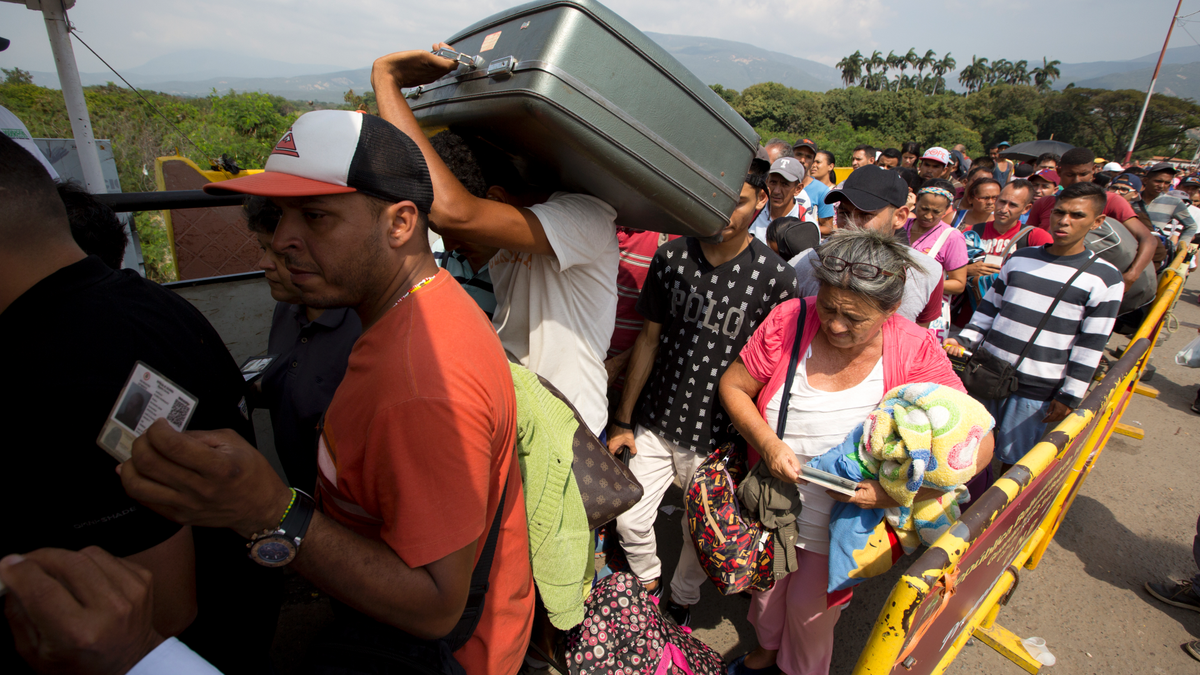
CUCUTA, Colombia – Standing in the middle of a busy border bridge filled with thousands of Venezuelans lugging babies and suitcases, Mark Green said one element stood out in contrast to every other migration crisis he has witnessed.
"This is the first one I've been to which is happening in real time," said Green, chief of the U.S. Agency for International Development, noting that he usually visits countries with established refugee camps.
"This is a real time catastrophe," he said.
Green traveled to the Colombian border city of Cucuta where tens of thousands of Venezuelans enter each day in search of food, medicine and increasingly, a new life, to announce the U.S. would be donating an additional $6 million to help the nation stem the crisis.
In total, the U.S. has now provided nearly $56 million to humanitarian groups and Latin American nations since the start of 2017. More than half of that aid has gone to Colombia, which has received the biggest influx of Venezuelans fleeing their country's economic and humanitarian catastrophe.
The U.S. aid to Colombia has focused largely on helping provide food and health services and is being funneled through organizations like the U.N. World Food Program and the international Red Cross.
The U.N. initiative kicked off earlier this year with a program to provide vouchers to Venezuelans but quickly derailed. Some Colombians protested outside, angry that Venezuelans were being given a free handout.
In addition to coping with a migration crisis, Colombia is also beset by deeply entrenched inequality and still navigating the early, fragile stages of an historic peace process with leftist rebels.
The World Food Program now help funds a soup kitchen where thousands of Venezuelans line up each day.
About half of the new funding is expected to go toward providing food while the other half will help Colombia provide medical services. Venezuelans have made more than 30,000 visits to Colombia emergency rooms thus far this year, surpassing the total in 2017. With hospitals in cities like Cucuta stretched to the max, the aid is going toward helping launch mobile care units and tents where vaccines and first aid are provided.
As Green stood in the middle of the Simon Bolivar International Bridge, Yolimar de Salcedo pushed her 82-year-old grandmother in a stretcher into Colombia in hopes of getting help for a fractured hip. Doctors in Venezuela told the family that they'd need to pay over $5,000 for a new hip and find the surgical supplies required for the operation.
In a country where the minimum wage adds up to just a couple of dollars a month, that price was out of reach. Salcedo said there was no ambulance available to take them to the bridge, so they borrowed a stretcher from a fire station and put it in the family's car.
"We pushed her ourselves," she said.
Venezuelan President Nicolas Maduro has resisted offers for international aid inside the country, contending there is no crisis and that what's really needed is for the U.S. to lift economic sanctions.
Green said the U.S. has been looking for ways to provide that help but that thus far those overtures have proven unfruitful. Still, another senior USAID official said he was "optimistic" the panorama could change.
If Maduro were to change his mind and allow U.S. assistance, Green said, "We would be ready in a flash."
